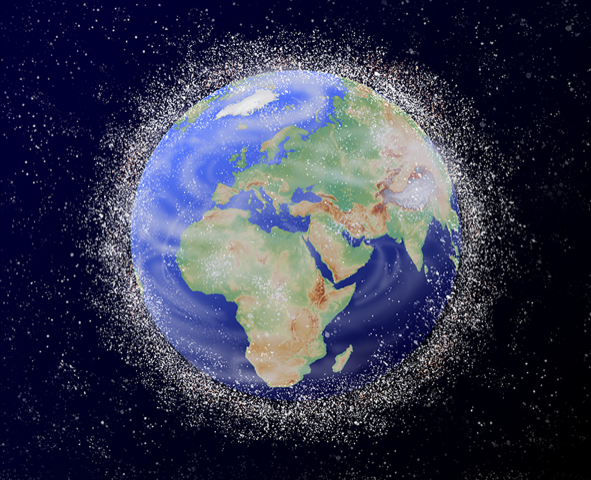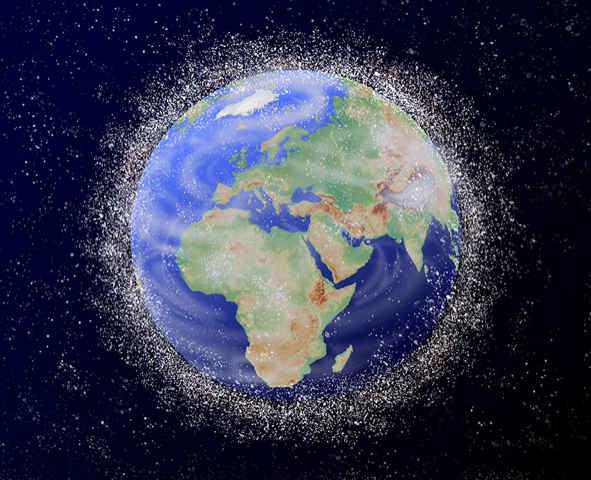Stand Up for Satellite Regulation
Like many space researchers, I am excited by the “New Space” wave currently sweeping through robotic space exploration. This wave involves the launch into space of a rapidly increasing number of small, but highly capable, spacecraft, or “smallsats.” Many smallsats are being used for scientific purposes—solar, magnetospheric, and ionospheric studies, Earth remote sensing, and astrophysical observations—and they hold immense promise for rapidly collecting useful information about the cosmos and about Earth’s environment.
But there is another side to New Space. Along with the dozens of scientific smallsats that are launched each year, thousands—possibly tens of thousands—of commercial satellites are being prepped for launch, most of which are also small (weighing in at less than ∼150kg). The proliferation of these satellites entails significant risks for space systems and for science, as it could generate hazardous space debris and hinder astronomy observations. In my view, satellite launches on such a large scale should be curtailed until the space community fully understands the problems these satellites pose and puts in place regulations that prevent or mitigate those problems.
Most of the proposed commercial smallsats will circle our planet in low Earth orbit (LEO)—altitudes lower than 2000 km—and provide communication capabilities. Improving point-to-point communication for people all over our planet is an important goal. But if Earth becomes encased in a cocoon of small spacecraft, there are tremendous risks.
First, tens of thousands of new objects in LEO mean that there would be more pieces of “stuff” that need to be avoided by other “stuff:” One spacecraft crashing into another orbiting object could start a cascade of collisions that could create a volume of debris a million times larger than that of the two initially colliding objects. It is already challenging to keep track of both the currently operating spacecraft in LEO and the thousands upon thousands of pieces of space junk from derelict spacecraft and rocket bodies. Adding to this problem makes no sense.
Second, putting so many spacecraft in LEO is a threat to safely launching other satellites to higher altitude orbits. Most space researchers believe that we need more scientific “eyes in the sky” at middle Earth orbit (about 2000–30,000 km altitude) and at geostationary Earth orbit (around 36,000 km). If things become too congested in LEO, it may become impossible to safely launch rockets through to these higher observing perches. By the same token, it is crucial to allow crewed or robotic vehicles to safely pass through LEO on their return to Earth. We cannot allow an impenetrable barrier to form around our planet.
Finally, a huge swarm of smallsats could diminish astronomers’ ability to observe the cosmos from Earth’s surface (see Drawing a Line in the Sky: Astronomers Confront Satellite Threat). No matter how carefully designed, any satellite will reflect sunlight and block the transmission of light from distant astronomical objects. A massive cloud of small spacecraft may corrupt the view of the night sky (or even of the day sky!) and make ground-based astronomy nearly impossible, which would have a tragic impact for key fields of science.
For all these reasons, governments and the entire space community need to act decisively to establish policies and guidelines for vehicle launch, operation, and disposal. The current space debris already poses great problems, as stressed by the National Orbital Debris Research and Development Plan—a report commissioned by the U.S. National Science and Technology Council. The unfettered emplacement of thousands of additional commercial smallsats could make such problems impossible to mitigate. Effective policies should require clear and tightly controlled plans for every newly launched satellite: Everything that’s put into orbit must be promptly and safely removed from orbit once its mission is accomplished.
In my view, the problem of satellite overpopulation of near-Earth space is a global issue that cannot be addressed by just one nation—if the United States, for instance, halted smallsat launches, private enterprises would seek launch opportunities elsewhere. But every space-faring country today, and every country that aspires to become one, should be extremely concerned about a looming “tragedy of the commons” around our planet. This situation will only get worse unless we do something right now and with a real sense of purpose. Thus, I encourage space scientists of all stripes to lobby their governments and all relevant agencies to declare an immediate hiatus on massive constellations of smallsats until a thorough, enforceable, sustainable, and enlightened set of policies is put in place.





